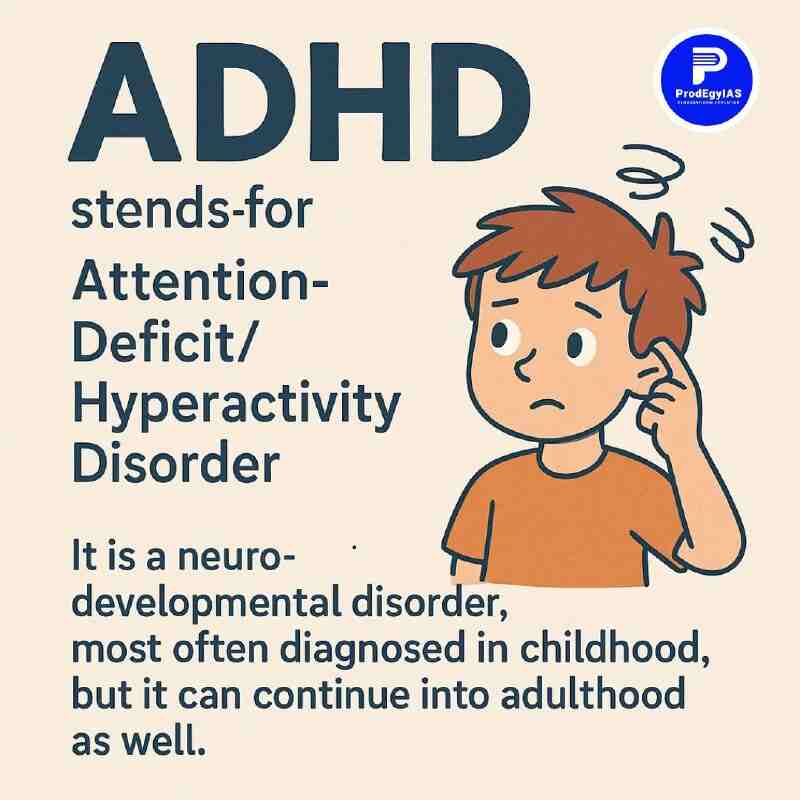Relevance: GS II: Health
Table of Contents
ToggleAccording to a recent study published in JAMA Network Open, “all youths who had three or more ADHD symptoms had significantly higher adjusted odds of using nicotine and tobacco products.”
- According to a recent study, those who exhibit several signs of attention-deficit/hyperactivity disorder (ADHD) are more likely to smoke, vape, or use other tobacco products.

What is ADHD?
In youngsters, attention-deficit/hyperactivity disorder (ADHD) is one of the most prevalent mental illnesses. ADHD symptoms include impulsivity (hurried, unplanned actions), hyperactivity (excess movement that is inappropriate for the situation), and inattention (inability to maintain concentrate).
Symptoms
Many kids may struggle to pay attention, wait their time, sit quiet, be impulsive, fidgety, and pay attention. Children who fit the diagnostic criteria for ADHD, however, differ in that they exhibit observably higher levels of hyperactivity, impulsivity, organization, and/or inattention than would be typical for their age or developmental stage.
Three primary forms of ADHD exist:
- presentation that is largely inattentive.
- primarily impetuous and hyperactive presentation.
- presented in combination.
The presence of enduring symptoms that have persisted throughout time and become apparent during the previous six months is the basis for a diagnosis.
Note: Stay informed about the most recent UPSC current Affairs, where we provide clear explanations of the major stories.
Causes
The precise causes of ADHD have not yet been determined by scientists. Although a number of genes have been connected to ADHD and there is mounting evidence that heredity plays a role in the disorder, no single gene or gene combination has been found to be the root cause of ADHD.
Treatment
Treatment for ADHD often consists of both medication and counseling. Parent management training and school intervention are two behavioral techniques that are part of the first-line approach that is advised for preschool-aged and younger children. An evidence-based therapeutic approach for young children with oppositional defiant disorder and ADHD is parent-child interaction therapy, or PCIT.
Key Findings of the Study
Data from the Population Assessment of Tobacco and Health, or PATH Study, was analyzed by researchers under the direction of Sean Esteban McCabe, an epidemiologist at the University of Michigan in Ann Arbor. For nine years, 13,572 American kids between the ages of 12 and 17 participated in this study by answering annual questions and completing survey forms.
- Nicotine causes the brain to release substances that temporarily improve concentration. Therefore, McCabe told ScienceNews, “people with ADHD might use tobacco to self-medicate.”
- According to the statistics, teens were more likely to use tobacco if they reported having more symptoms. those who experienced three or four signs of ADHD, for example, were 60% more likely to vape than those who did not.
- According to this study, if their ADHD symptoms are managed with therapy… or if the symptoms go away on their own, [children] are still less likely to use tobacco and nicotine and suffer the negative consequences that come with it.
Practice Question Q. With reference to Attention-Deficit/Hyperactivity Disorder (ADHD), consider the following statements:
Which of the statements given above is/are correct? A. 1 and 2 only B. 2 only C. 1 and 3 only D. 1, 2 and 3
Ans. B |
Note: To take practice tests on Daily current Affairs MCQs, click the link that is attached.
UPSC General Studies Paper Preparation
Topic | |
About the Author: Nitin Kumar Singh |



